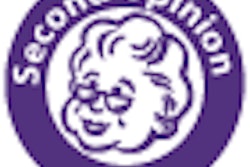Although imaging volume per Medicare beneficiary fell by 2.5% from 2009 to 2010, the decline represents just a fraction of the overall rapid growth of imaging procedures over the past decade, according to the Medicare Payment Advisory Commission's (MedPAC) annual report to Congress.
While acknowledging the 2010 decline in Medicare imaging volume in its March 15 report, the agency stressed that the data should be kept in context. Overall, imaging volume grew a cumulative 85% from 2000 to 2009; the 2.5% decrease in imaging volume in 2010 represents just 1/30th of the cumulative increase over the past decade, according to MedPAC.
"The growth in imaging volume from 2000 to 2009 was exceeded only by the growth in use of tests -- such as electrocardiograms and cardiovascular stress tests -- during those years," MedPAC wrote in "Report to the Congress: Medicare Payment Policy."
Changes in Medicare imaging volume
|
||||||||||
| Source: MedPAC's analysis of claims data for Medicare fee-for-service beneficiaries |
For example, CT of parts of the body other than the head -- the CT scan type that accounts for the largest share of imaging spending -- grew from 258 units of service per 1,000 beneficiaries in 2000 to 551 units in 2009. Even with the 0.7% decrease to 548 units in 2010, utilization was still more than double the rate in 2000, according to MedPAC.
MedPAC also found the same trend in the most frequently used MRI service: MRI in parts of the body other than the brain. Utilization had increased from 64 services per 1,000 beneficiaries in 2000 to 144 per 1,000 in 2009. Despite a 2.4% dip to 141 units of service per 1,000 beneficiaries in 2010, the use rate still remained well above double the 2000 rate, MedPAC said.
The 2010 decrease in imaging use occurred amid concerns about the appropriateness of imaging, which are widespread, according to MedPAC.
In other imaging-related findings, MedPAC found decreases of less than one percentage point in the rate of breast cancer screening for all female beneficiaries ages 65 to 74 and in the rate of follow-up mammography for beneficiaries diagnosed with breast cancer from 2008 to 2010. The commission also found small decreases (two to three percentage points) during the same period in the rates of chest x-ray and other diagnostic imaging services for beneficiaries diagnosed with breast cancer.
MedPAC also found that hospitals are continuing to expand the scope of their services, with new technologies such as PET among those that grew most rapidly.
Shares of urban and rural hospitals offering services: 2005-2010
|
Despite its cautionary tone toward the decline in imaging use in 2010, the report was well-received by the Medical Imaging and Technology Alliance (MITA), which said in a statement that it applauded MedPAC for acknowledging the recent downward trend in Medicare spending and utilization of medical imaging procedures.
MITA executive director Gail Rodriguez said that MITA appreciates MedPAC's attention to the latest payment trends and encourages members of Congress to consider these findings before targeting medical imaging services for additional reimbursement cuts.
From its own analysis of Medicare claims data commissioned last year, MITA noted that spending on imaging services for each Medicare beneficiary has dropped 13.2% since 2006, when imaging-specific reimbursement cuts from the Deficit Reduction Act began to be implemented. The analysis also determined that imaging utilization per beneficiary dropped by 3% in 2010.
Meanwhile, spending for nonimaging Medicare services has increased by 20% since 2006 and nonimaging utilization climbed 2% in 2010, according to MITA. The organization said its analysis also found that imaging is now a smaller portion of Medicare spending than it was at the turn of the century.
The MedPAC report also included a number of recommendations aimed at increasing the efficiency of Medicare, including fee-for-service payment system update recommendations that it said would result in net savings to Medicare. The agency also continued its call to repeal the sustainable growth rate (SGR) system for updating physician fee schedule services in favor of specified updates that would no longer be based on an expenditure-control formula.



















